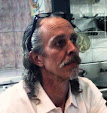Fighting Hunger with Bytes of Data and the Blockchain
What is ‘Blockchain’ and How is it Connected to Fighting Hunger?
The World Food Programme (WFP) is testing the use of blockchain, a bold technology that can potentially transform the fight against hunger. Blockchain technology, most famously associated with the crypto-currency Bitcoin, offers unique opportunities for humanitarian agencies to provide the best-possible assistance to vulnerable people around the world.
 |
| ‘This can revolutionize assistance to vulnerable families across the globe.’ Photo: WFP |
What is blockchain?
Put simply, blockchains provide a way for two parties to do business with each other without the need for a trusted third party. Akin to emails, information on the blockchain can flow from one address to another. The content of the message, for example, can be a value transfer, a beneficiary’s ID, or somebody’s health records.
 |
| Where markets are functioning, cash-based transfers allow people to choose what food to buy. Photo: WFP/Farman Ali |
An identical record of all messages on a blockchain is available to every participant (or ‘node’) on the blockchain, which can be many thousands or more. Because there are so many copies of the data on the blockchain network, it is exceedingly difficult for a would-be attacker to alter the records and falsify transactions. Should this happen, however, it would be immediately obvious that there has been an intrusion. This makes the blockchain much more secure than traditional, centralized systems, and renders its records unchangeable.
Shifting towards Cash-Based Assistance
In recent years, WFP has significantly scaled up its cash transfers. In areas where markets and services are well functioning, these transfers are often more effective and efficient at improving livelihoods. Not only do they allow recipients to choose which food to buy, they also inject much-needed cash into local economies. WFP’s Innovation Accelerator is therefore exploring approaches to delivering cash-based transfers in order to reduce costs and risks, while improving data protection and speeding up delivery.
From the Sandbox to the Field
The first, successful test at field level of WFP’s blockchain innovation — called ‘Building Blocks’ — was carried out in January deep in the heart of Sindh province, Pakistan. As vulnerable families received WFP food and cash assistance, the transactions were authenticated and recorded on a public blockchain through a smartphone interface. Transaction reports generated were then used to match the disbursements with entitlements.
 |
| Photo: WFP/Alexandra Alden |
“Blockchain can revolutionize the way WFP delivers assistance to vulnerable families across the globe. It can bring us closer to the people we serve and allow us to respond much faster,” said Farman Ali, from the WFP Karachi provincial office.
Using the lessons learned in this first phase in Pakistan, WFP is now moving towards a full-scale pilot.
Immense Potential
Blockchain has the potential to allow faster intervention in some of the world’s most difficult environments. For example, in vulnerable countries lacking financial infrastructure, blockchain could help humanitarian actors roll out life-saving cash assistance in a matter of days when disasters strike.
Blockchains can be seen as a foundational technology akin to the internet, upon which many different applications can be built. Just as email was the first widespread application of the internet, payments have been the first widespread application of blockchains. And just as the internet rapidly expanded beyond email, blockchain applications have already expanded beyond payments. WFP is monitoring the scope for applications beyond cash-based transfers, identity management, and supply chain operations.
The full potential of blockchains can only be realized if all humanitarian actors collaborate around this platform. Republished from the World Food Programme blog on Medium.
Learn more about how WFP is harnessing the potential of blockchain technology to enhance our ability to provide effective, efficient assistance to the people we serve — and save millions of dollars.
Based in Munich, the Innovation Accelerator combines internal WFP staff with experts and entrepreneurs from across the private sector and civil society. Teams collaborate for three to six months on ideas that are either proposed by WFP innovators with first-hand field knowledge, or crowd-sourced by members of the public. For more information, contact: global.innovation@wfp.org.
The Accelerator is generously supported by a network of public and private partners and funded by the German Federal Foreign Office alongside the German Ministry for Economic Cooperation and Development and the State of Bavaria.







